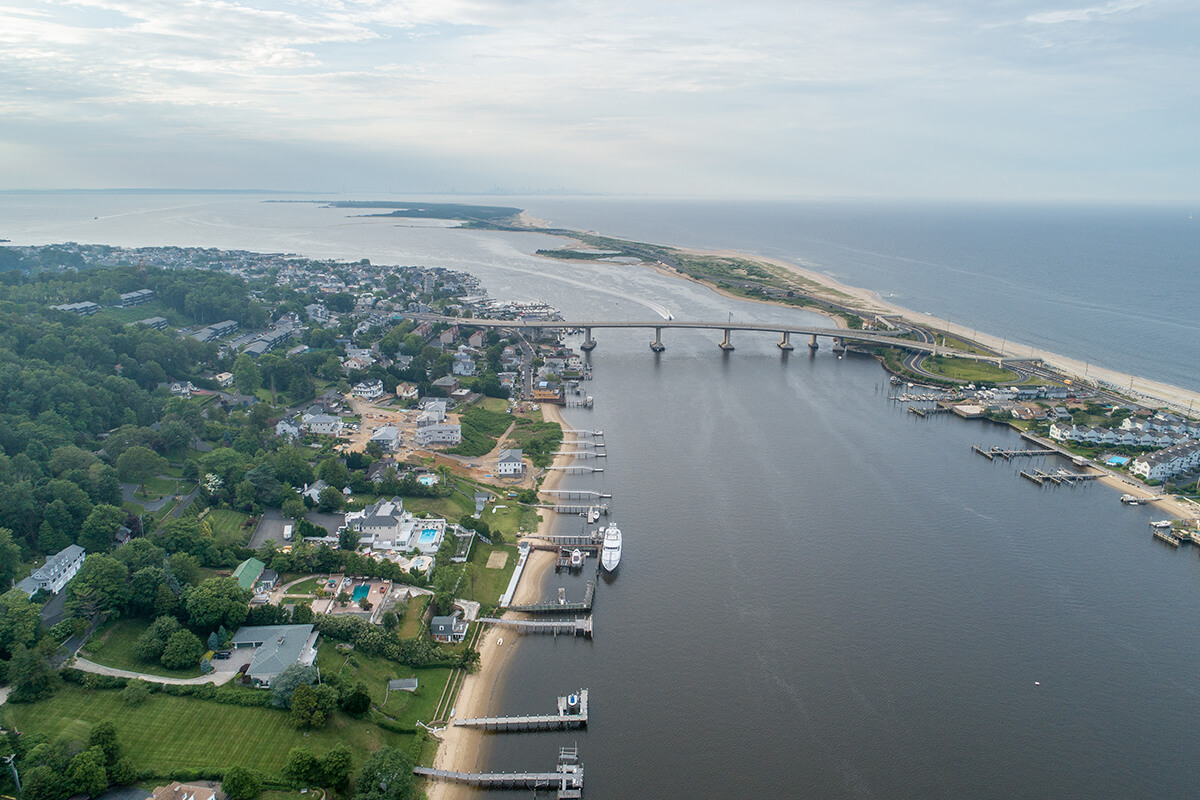
Monmouth University researchers, in partnership with the New Jersey Department of Environmental Protection (NJDEP), recently completed a report that offers guidance for determining the appropriate type and location of green infrastructure projects designed to improve the resilience of coastal communities and ecosystems. The report, Framework for a Coastal Ecological Adaptation Prioritization Support Tool: Methodology, was authored by Urban Coast Institute (UCI) Director Thomas Herrington and History and Anthropology Department Associate Professor Geoff Fouad.
The research stemmed from a 2015 NJDEP effort to create a guidebook for communities implementing natural and nature-based adaptations in coastal areas. Natural adaptations focus on conserving and restoring existing features (for example, planting grasses on beach dunes) while nature-based adaptations are hybrid, engineered approaches that seek to mimic the risk reduction functions of natural systems (such as depositing dredged sediments in a bay to create an artificial island). The NJDEP developed 10 successful pilot projects in coastal communities based on its guidebook, but recognized that the projects may not have targeted areas most in need of ecological restoration.
“They wanted to know how to prioritize projects so they can identify the best possible adaptations for specific locations in the state,” Herrington said. “We worked with the NJDEP to determine what types of natural and nature-based solutions work best in a given environment, considering factors like the project’s distance from a community, its consistency with the landscapes around it, and whether it would restore what’s there rather than building something new.”
The report notes that in contrast to hard or traditional “gray” engineered structures like seawalls and bulkheads, natural systems can offer equal or better hazard protection, avoid negative impacts to the environment and naturally adapt to changing conditions over time. However, these natural defenses have degraded significantly in New Jersey over the last century due to development, climate change and other trends.
Working with input from coastal experts and stakeholders, the NJDEP and Monmouth researchers set out to develop a project prioritization framework that places green adaptations on par with gray ones for protecting communities and ecosystems. The framework provides a high-level, landscape-scale screening of possible coastal ecological adaptations using geographical information system (GIS) data housed and managed by the NJDEP. The objective is to prioritize those adaptations that address a particular coastal issue of concern, such as coastal inundation, and are aligned with existing and/or future land use and management goals.
For more information on the report, contact Dr. Thomas Herrington at therring@monmouth.edu.
